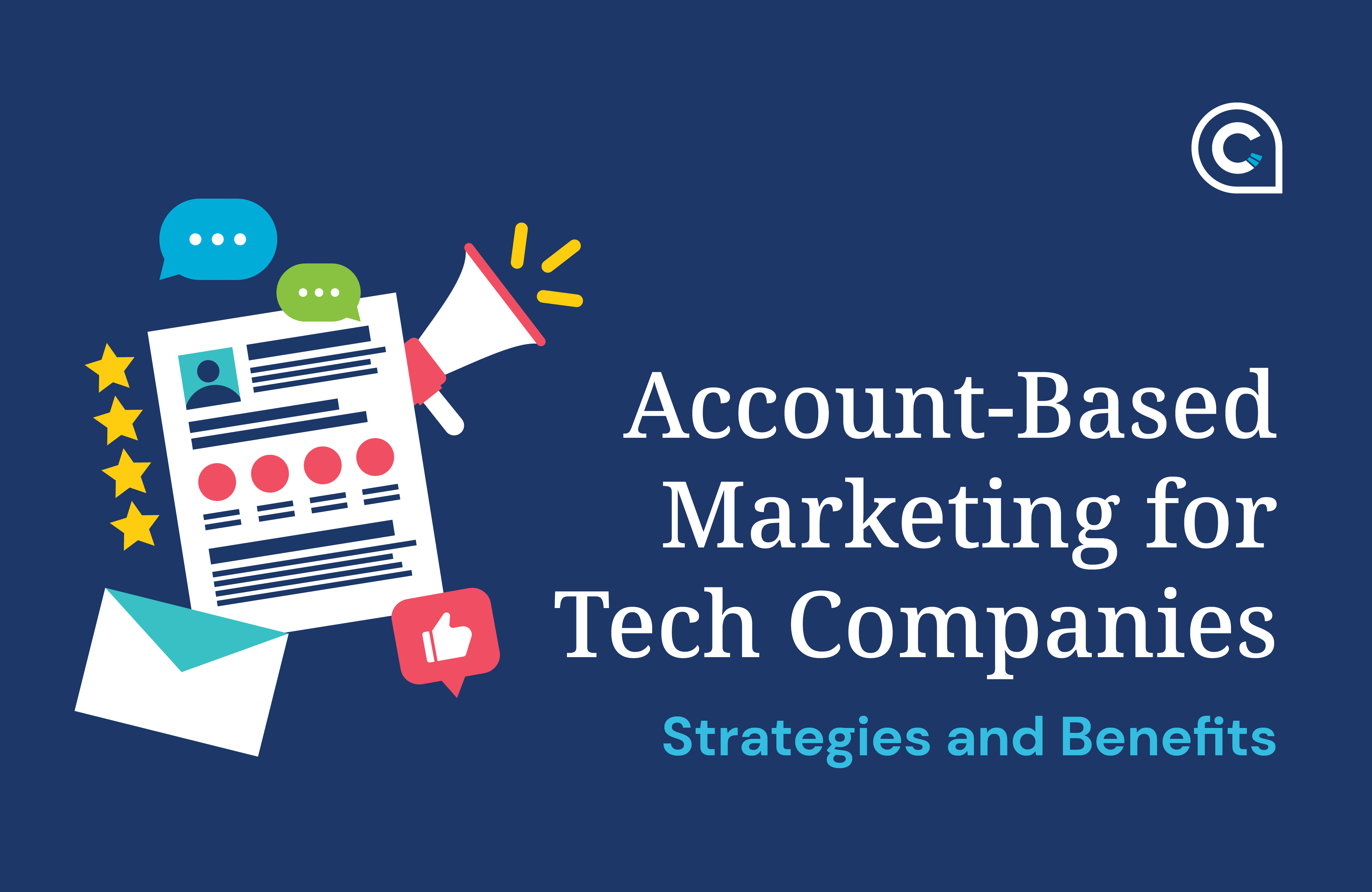
Account-Based Marketing for Tech Companies: Strategies and Benefits
In the current competitive business environment, account-based marketing for tech companies has emerged as a game-changer. Unlike traditional marketing methods, ABM focuses on specific high-value accounts, making it particularly effective for tech startups and marketing managers aiming to maximize their ROI. This blog will explore the strategies and benefits of ABM, shedding light on why it’s indispensable in the tech industry.
What is Account-Based Marketing?
Definition and Explanation of ABM
Account-Based Marketing (ABM) is a strategic approach focusing on identifying and targeting high-value accounts rather than casting a wide net. It involves creating personalized marketing campaigns tailored to the needs and challenges of each account. This method promises higher engagement and better conversion rates.
Importance of ABM in the Tech Industry
The tech industry is characterized by high-value, long sales cycles, and complex decision-making processes. ABM helps tech companies cut through the noise and reach the most promising prospects. By concentrating resources on a smaller number of target accounts, tech companies can deliver more personalized experiences, resulting in stronger relationships and increased loyalty.
Differences Between ABM and Traditional Marketing
Traditional marketing often focuses on reaching a broad audience to generate leads. In contrast, ABM zeroes in on specific accounts, providing tailored solutions that address their unique pain points. This targeted approach increases the relevance and impact of marketing efforts, making it particularly effective for tech companies.
Benefits of Account-Based Marketing for Tech Companies
Enhanced Targeting and Personalization
One of the primary benefits of account-based marketing for tech companies is enhanced targeting and personalization. By focusing on high-value accounts, businesses can deliver content that resonates with their audience, leading to higher engagement and conversion rates.
Higher ROI Compared to Traditional Marketing Methods
ABM offers a higher ROI by concentrating efforts on accounts with the highest potential value. Instead of spreading resources thin, tech companies can achieve better results by investing in personalized campaigns for a select group of prospects.
Improved Alignment Between Sales and Marketing Teams
ABM fosters better alignment between sales and marketing teams. When both departments work together to identify and target high-value accounts, they can create more cohesive and effective campaigns. This collaboration leads to more seamless customer journeys and improved conversion rates.
Faster Sales Cycles Due to Focused Efforts
With ABM, tech companies can shorten their sales cycles. By targeting accounts that are a good fit for their products or services, businesses can accelerate the decision-making process. This focused approach reduces the time spent on unqualified leads and speeds up the path to purchase.
Better Customer Retention and Satisfaction
Account-based marketing also contributes to better customer retention and satisfaction. By delivering personalized experiences and addressing specific pain points, tech companies can build stronger relationships with their clients. This approach leads to increased loyalty and long-term success.
Key Strategies for Implementing ABM in Tech Companies
Identifying High-Value Accounts
How to Select Target Accounts
The first step in implementing ABM is identifying high-value accounts. This process involves analyzing your customer base to determine which accounts have the highest potential value. Look for accounts that align with your ideal customer profile and have a high likelihood of conversion.
Criteria for Choosing High-Value Accounts
When selecting target accounts, consider factors such as company size, industry, revenue potential, and alignment with your product or service offerings. Additionally, look for accounts that have shown interest in your brand or have engaged with your content in the past.
Creating Personalized Content
Importance of Personalized Content in ABM
Personalized content is crucial in account-based marketing for tech companies. Tailoring your messaging to address the specific needs and pain points of each account can significantly increase engagement and conversion rates. Personalized content demonstrates that you understand the unique challenges faced by each account and have solutions designed to address them.
Examples of Personalized Content for Tech Companies
- Case Studies: Share success stories of how your product or service has helped similar companies overcome their challenges.
- Whitepapers: Provide in-depth analysis and insights tailored to the specific needs of each account.
- Personalized Emails: Craft emails that address the unique pain points and objectives of each account, offering tailored solutions and recommendations.
Aligning Sales and Marketing Teams
Strategies for Achieving Sales and Marketing Alignment
Effective ABM requires seamless collaboration between sales and marketing teams. To achieve this alignment, clear communication channels and shared goals must be established. Regular meetings and joint planning sessions can help ensure both teams are on the same page and working towards the same objectives.
Tools and Platforms That Facilitate Alignment
Several tools and platforms can help facilitate alignment between sales and marketing teams. CRM systems like Salesforce and HubSpot provide a centralized location for tracking account interactions and progress. Additionally, marketing automation platforms like Marketo and Pardot can help streamline campaign execution and reporting.
Leveraging Data and Analytics
Role of Data in ABM
Data plays a crucial role in the success of ABM. By analyzing data from various sources, tech companies can gain valuable insights into their target accounts and refine their strategies accordingly. Data-driven decision-making ensures that marketing efforts are focused on the most promising opportunities.
Tools for Data Collection and Analysis
Several tools can help tech companies collect and analyze data for ABM. Google Analytics, for example, provides insights into website traffic and user behaviour. Additionally, platforms like ZoomInfo and Clearbit can help gather detailed information about target accounts, including company size, industry, and key decision-makers.
Using Analytics to Refine ABM Strategies
Regularly reviewing and analyzing data can help tech companies refine their ABM strategies. By identifying patterns and trends, businesses can make data-driven adjustments to their campaigns, ensuring they remain effective and relevant.
Engaging Target Accounts
Multi-Channel Approach to Engage Accounts
A multi-channel approach is essential for engaging target accounts in ABM. Use a combination of email, social media, direct mail, and personalized events to reach decision-makers and build relationships. This approach ensures that your message is seen and heard across multiple touchpoints.
Best Practices for Reaching Out to Decision-Makers
When reaching out to decision-makers, focus on delivering value and addressing their specific pain points. Personalized emails, LinkedIn messages, and direct mail can all be effective ways to capture their attention. Additionally, consider hosting exclusive events or webinars tailored to the interests of your target accounts.
Challenges and Solutions in ABM for Tech Companies
Common Challenges Faced by Tech Companies in ABM
Implementing ABM can present several challenges for tech companies. These may include difficulty in identifying high-value accounts, aligning sales and marketing teams, and creating personalized content at scale. Additionally, measuring the success of ABM campaigns can be complex due to the longer sales cycles often associated with high-value accounts.
Practical Solutions and Tips to Overcome These Challenges
To overcome these challenges, consider the following solutions:
- Invest in Data and Analytics Tools: Use advanced tools to gather and analyze data, enabling more informed decision-making.
- Foster Collaboration: Encourage regular communication and collaboration between sales and marketing teams to ensure alignment.
- Leverage Automation: Utilize marketing automation platforms to streamline the creation and distribution of personalized content.
- Set Clear Metrics– Define clear metrics and KPIs to measure the success of your ABM campaigns and make data-driven adjustments as needed.
Conclusion
In conclusion, account-based marketing for tech companies offers numerous benefits, including enhanced targeting, higher ROI, improved sales and marketing alignment, faster sales cycles, and better customer retention. By implementing the strategies outlined in this blog, tech companies can successfully leverage ABM to drive growth and achieve their business objectives.
Ready to take your marketing to the next level? Contact us for a consultation with Cyan Solutions today and discover how our expertise in ABM can help your tech company thrive.
Want to make your marketing decisions data-driven?
Talk to the marketing experts at Cyan today. Contact Us.

Discover what Cyan can do for you
We want to get to know you better so we can understand what services are going to help you meet your goals.


